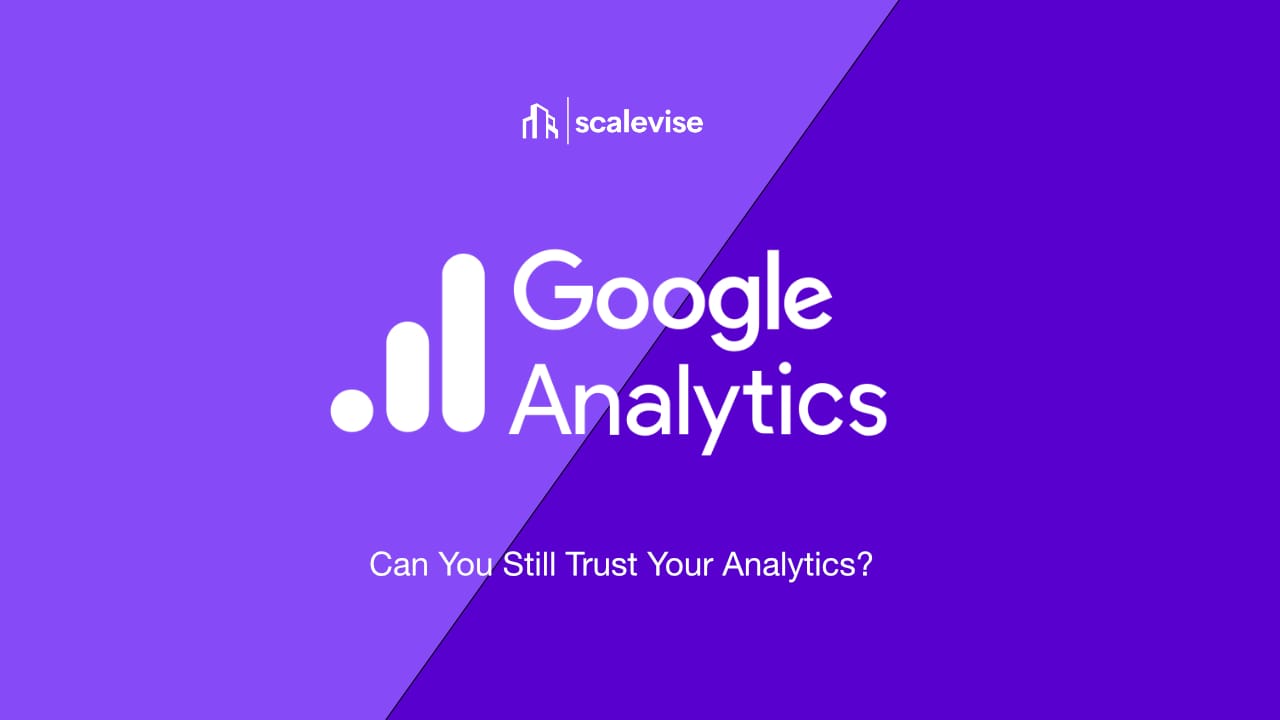Google Analytics Is Blind to AI Search: Why Your Traffic Data Is No Longer Reliable

Google Analytics has long been the go-to tool for tracking web performance but it’s becoming increasingly outdated. In a world shifting rapidly toward AI-powered search and agentic browsing, your GA4 reports are no longer telling the full story.
And that’s a problem.
What Google Analytics No Longer Shows You
When you open your analytics dashboard, you expect to see a full picture of who’s visiting your site. But if you check your server logs, you’ll notice something curious:
- Bots like ChatGPT, Perplexity, and Google AI Search are hitting your content
- They behave like users: fetching pages, crawling content, even copying snippets
- Yet none of this traffic appears in GA4
That means you’re losing visibility into a growing class of users: AI systems acting on behalf of human searchers.
Server Logs Tell a Different Story
On multiple Scalevise properties, we’ve seen IPs and user agents like:
GPTBot/1.2 (+https://openai.com/gptbot)PerplexityBot (+https://www.perplexity.ai/bot)- Google’s new
Google-ExtendedandGoogleOther
These bots request article pages, images, and even structured data yet they bypass JavaScript and cookies, making them invisible to Google Analytics.
AI Search Is Replacing Traditional Clicks
According to Perplexity’s report on AI Search Summaries, Google’s AI Overviews in search results have already dropped CTRs to 1% or lower in some industries. People get answers directly in the search box without ever visiting your site.
And ChatGPT? It may summarize your article, cite a link, or even rephrase your content again, without ever triggering a pageview.
The Rise of Invisible Users
So what kind of “users” are we actually dealing with?
- LLM Agents like ChatGPT that retrieve and summarize pages
- AI Search Interfaces like Perplexity and Google AI Overview
- Autonomous browsing agents that read and store content without engaging in ways GA4 can detect
In essence, your website might still be influencing decisions but not getting credit for it in your analytics.
Why This Matters
- You might assume your traffic is down, when in reality, you’re still being read just not clicked
- Your conversion funnels might show drop-offs that are artificially inflated
- Attribution modeling based on GA4 is becoming dangerously misleading
- SEO decisions based purely on “what drives traffic” now ignore massive hidden consumption
What You Can Do Now
- Monitor Server Logs
Set up bot filters and user agent logging to track LLM and crawler access. - Use Structured Data Strategically
Make your content easier to parse for AI search and ensure it reflects your expertise and offerings. - Diversify Analytics
Combine GA4 with server-side logging, log-based attribution, or tools like Plausible, Logflare, or self-hosted analytics. - Track Copy-Based Mentions
Use brand monitoring and backlinks tracking to catch unlogged references. - Build Pages That Are AI-Ready
This includes clean markup, descriptive headings, and well-structured lists for easy AI digestion even when clicks don’t follow.
Final Thought
Google Analytics is no longer enough. If you’re still relying on GA4 as your single source of truth, you’re operating with incomplete data.
In the AI-driven web, being visible no longer guarantees being measured.
And what you can’t measure, you can’t optimize.
Resources
